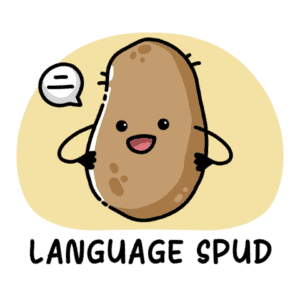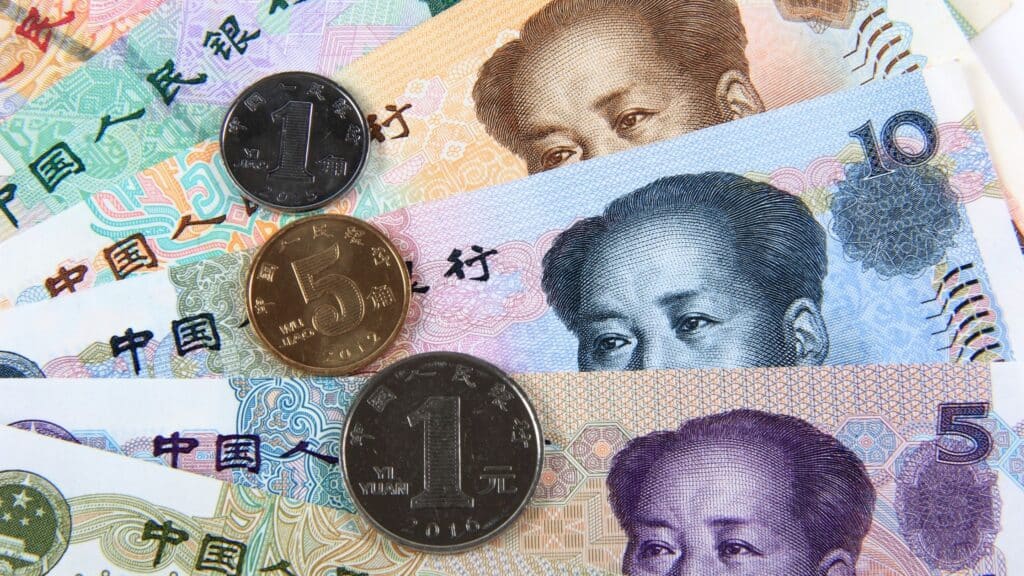
Money.
It makes the world go around.
No matter where you live, we all need some of it… unless you live in the wilderness of Qinghai.
But when it comes to money, the Chinese tend to do things a little differently.
The official name of the Chinese currency is Renminbi 人民币 (rénmínbì) which is translated roughly to ‘the people’s money’. This is often abbreviated to RMB.
When I was living in China, I noticed that money was also referred to as ‘yuan’ (元 yuán) quite frequently too. In fact, I think I heard the word yuán more than I heard the word rénmínbì.
But why?
In todays post, we’ll be answering this question and more as we talk about all things related to money in Mandarin Chinese!
- A History of Money in China
- RMB or CNY
- Chinese Money Denominations
- 一元 or 壹圆
- Cash Culture in China
- Money Related Vocabulary and Phrases
A History of Money in China
Money has been around in China longer than most other parts of the world, and it has a rather rich and interesting history.
According to the history books, currency in China can be traced as far back as the neolithic age up to 4500 years ago.
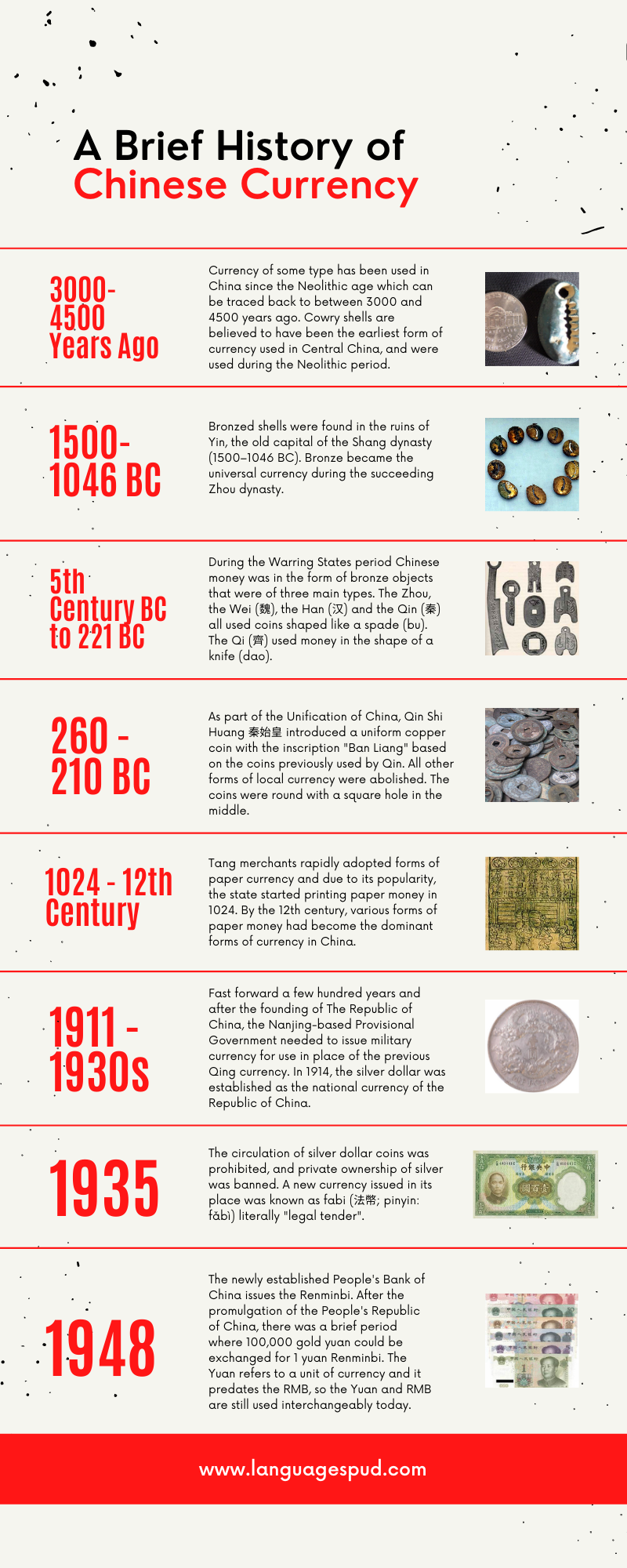
RMB or CNY
As stated above, The official Chinese currency is 人民币 (pronounced ‘rénmínbì‘) but this is by no means the only word they use for money in China.
元 (pronounced ‘yuán‘) is another word for money, and for all intents and purposes, yuan and renminbi are the same thing and they’re used interchangeably.
- The RMB (人民币 – rénmínbì) is the currency of China.
- The CNY (元 – yuán) is a Chinese word for a unit of currency or unit of account.
- Qian (钱 – qián) is the direct translation of the word ‘money’.
But what is the difference between yuan and renminbi?
Think of it in terms of a country that uses gold as its currency.
In this scenario, if you were in a store buying vodka in the olden days, the store assistant wouldn’t say, “That’ll be 20 gold, please.” They would be more likely to say, “That’ll be 20 ounces of gold.”
… Well, they’d be more likely to ask, “What is vodka!?” but you get my point.
Ounce is the unit of currency here, just like the 元 (yuan) is in China.
In my home country of the UK, we have a similar thing going on with ‘pounds’ and ‘sterling’. Back in the day, we decided to use silver instead of gold as our currency. Although our currency today is still technically referred to as ‘sterling’, nobody would ever say something costs ’10 sterling’.
We can say something costs ’10 pounds sterling’ or ’10 pounds’.
块 – kuài
Despite both renminbi and yuan both being commonly used terms for money in China, they’re perhaps not the most commonly used words.
块 (pinyin: kuài) is a measure word in Mandarin Chinese, and actually means ‘piece’.
In China, you’re likely to hear this word used by vendors during most financial transactions.
For example, when buying cigarettes in a store, the shop assistant will say something like “十块钱“ (shí kuài qián) which roughly translates to “10 pieces of money”.
- 十 (shí ) – 10.
- 块 (kuài ) – measure word meaning ‘piece’
- 钱 (qián) – money.
Referring to yuan as “kuai” is kind of similar to calling pounds “quid” in the UK, or dollars “bucks” in the US.
Chinese Money Denominations
Since the founding of the China People’s Bank in China in 1948, four series of bank notes have been released in China.
- The first series of bank notes was released in 1948 and consisted of 1, 5, 10, 20, 50, 100 and 1000 yuan notes. 200, 500, 5000, 10,000 and 50,000 yuan notes came out between 1949 and 1950, but these notes were all officially withdrawn by 1955.
- The second series of bank notes was released in 1955 and featured denominations of China’s ethnic languages on the back including Uyghur, Tibetan, Mongolian, and Zhuang. ¥0.01, ¥0.02, ¥0.05, ¥0.1, ¥0.2, ¥0.5, ¥1, ¥2, ¥3, ¥5 and ¥10 notes were available.
- In 1962, the third series of banknotes ran concurrently with the second series for the following two decades until they were phased out completely by the year 2000.
- The fourth series of renminbi banknotes was introduced between 1987 and 1997 and were withdrawn from circulation on 1 May 2019.
- The fifth series of banknotes includes ¥1, ¥5, ¥10, ¥20, ¥50 and ¥100 notes. Any representation of ethnic groups has disappeared, and every note uses the portrait of Mao Zedong, and there’s nothing worrying about that…
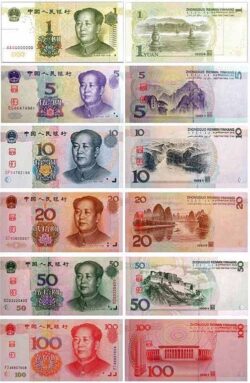
One yuan can be further divided into 角 (jiao), 毛 (mao), and 分 (fen).
There are 10 角 (jiao) in a 元 (yuan), just like there are 10 dimes in a dollar.
There is also 100 分 (fen) in a yuan, just like there are 100 pence in one pound sterling.
Although coins and notes are available for jiao, you will see them less and less in China these days. The central bank has issued both coins and notes for jiao and fen, though notes for fen denominations are rare.
一元 or 壹圆
Check out a Chinese bank note and you won’t see an amount of money followed by “元“ printed on it.
This might seem odd to some people. After all, this is China, so why wouldn’t they be writing Chinese numbers on their bank notes?
Well, they actually are, but there is one reason why the Chinese banking authorities do things a little differently:
Fraud prevention.
Basically, in an effort to make printed numbers more challenging to copy, there is a special set of alternate numbers the banking system uses.
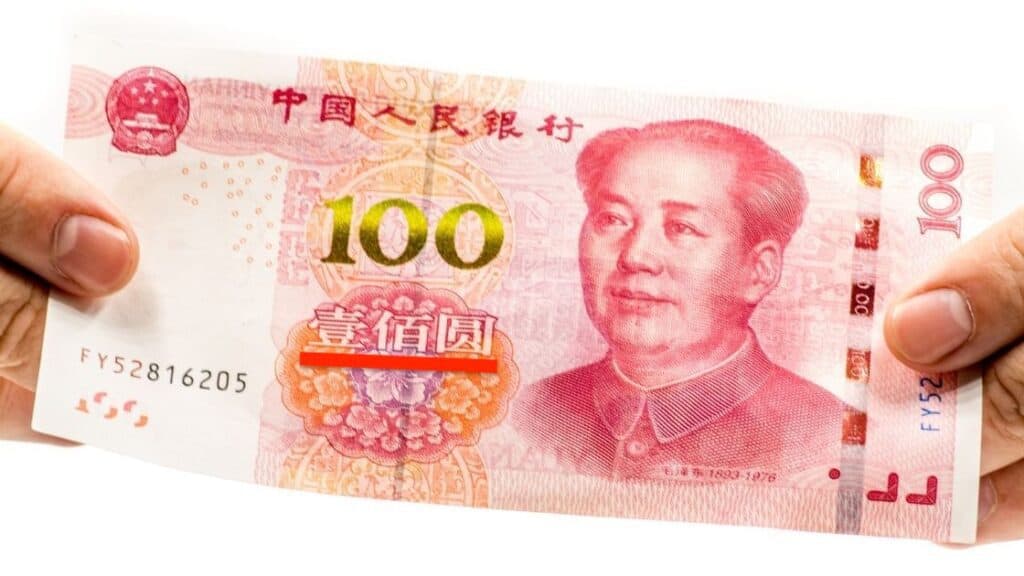
Take a look at the table below to see all of the fraud-resistant numbers used in China’s banking system.
| Number | Regular Numbers | Complex Form | Pinyin |
| 1 | 一 | 壹 | yī |
| 5 | 五 | 伍 | wǔ |
| 10 | 十 | 拾 | shí |
| 20 | 二十 | 贰拾 | èrshí |
| 50 | 五十 | 伍拾 | wǔshí |
| 100 | 一百 | 壹佰 | yībǎi |
Cash Culture in China
You may have heard that mobile payment usage is on the rise in China.
It’s safe to say that during my time in China, I have used my wallet with increasing rarity and I use my phone for almost every financial transaction.
Although every store still accepts cash here, we’re almost at the point where it’s kind of weird to use it (unless you’re of an older generation). There might even be the odd occasion in China when a small store won’t have the correct change if you’re paying with cash.
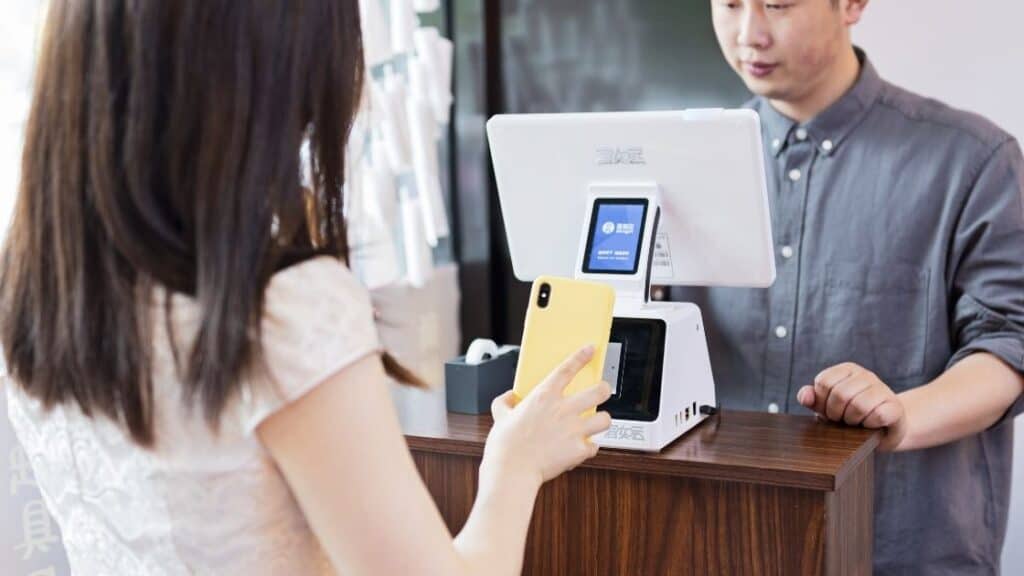
Although you can technically register international cards with the international version of Alipay and use the app to make purchases in China, this process often proves problematic and quite annoying.
If you plan to stay in China short-term, it’s best to stick to what you know and use ATMs to withdraw cash using your international card.
Most major banks accept international cards, and I always recommend using ATMs attached to large bank branches. In the unlikely event of your card being swallowed, it’ll be much easier to inform staff to get your card back. If your card is swallowed at a stand-alone ATM in the middle of nowhere, getting your card back will be much more of a headache.
Hong Baos
In Chinese culture, the giving of a ‘red envelope’ or 红包 (pronounced: hóngbāo) is common practice on special occasions such as holidays, graduations, weddings, and when a new baby arrives.
The colour red symbolises good luck in China and was traditionally used to ward off evil spirits.
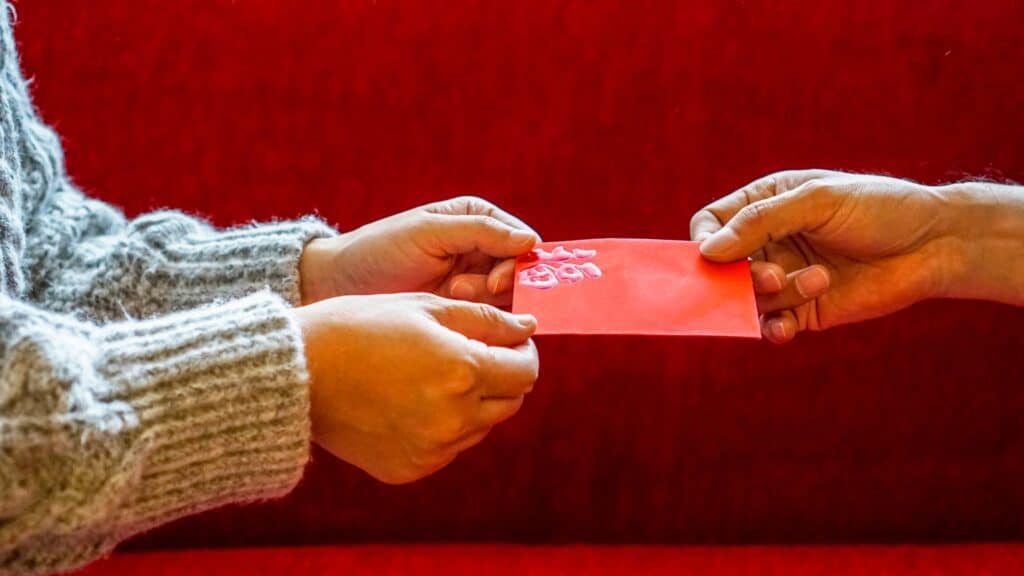
How much money you put into a red envelope depends on how rich you are to begin with!
However, it’s traditional to put notes of an even number inside because odd numbers are usually associated with funerals. The only exception for this is at weddings, as odd numbers can’t be divided.
Many believe that notes shouldn’t be given in fours or four should not appear in the amount of money given, such as 40 or 400 RMB. This is because the pronunciation of the word four (四) is too similar to the word for death (死).
Also, if you’re giving a 红包, it’s customary to give fresh, clean banknotes.
Money Related Vocabulary and Phrases
Firstly, let’s have a quick review of all the different ways you can refer to money in Mandarin Chinese.
| English | Hanzi | Pinyin |
| Renminbi (official currency of China) | 人民币 | rén mín bì |
| Yuan (unit of currency or account) | 元 | yuán |
| Kuai (measure word for money) | 块 | kuài |
| Jiao (1/10 denomination of 1 RMB) | 角 | jiǎo |
| Fen (1/100 denomination of 1 RMB) | 分 | fēn |
| Money | 钱 | qián |
Global Currencies
Now we’ve learned how to refer to money in China, what about the other major currencies around the world?
Check out the table below to find your currency.
| English | Chinese | Pinyin |
| $ Australian dollar | 澳元 | ào yuán |
| R$ Brazilian Real | 巴西雷亚尔 | bāxī léi yà ěr |
| £ British Pound | 英镑 | yīng bàng |
| $ Canadian dollar | 加拿大元 | jiā ná dà yuán |
| CLP$ Chilean Peso | 智利比索 | zhìlì bǐsuǒ |
| COL$ Colombian Peso | 哥伦比亚比索 | gēlúnbǐyǎ bǐsuǒ |
| Kč Czech Koruna | 捷克克朗 | jiékè kèlǎng |
| € Euro | 欧元 | ōu yuán |
| HK$ Hong Kong Dollar | 港元 | gǎng yuán |
| Ft Hungarian Forint | 福林 | fúlín |
| ₹ Indian Rupee | 卢比 | lú bǐ |
| Rp Indonesian rupiah | 印尼盾 | yìnní dùn |
| ₪ Israeli New Shekel | 以色列新谢克尔 | yǐsèliè xīn xiè kè ěr |
| ¥ Japanese Yen | 日圆 | rì yuán |
| RM Malaysian Ringgit | 马来西亚林吉特 | mǎláixīyà lín jí tè |
| $ Mexican peso | 墨西哥比索 | mòxīgē bǐsuǒ |
| NZ$ New Zealand Dollar | 新西兰元 | xīn xī lán yuán |
| kr Norwegian Krone | 挪威克朗 | nuówēi kèlǎng |
| ₱ Philippine Peso | 菲律宾比索 | fēilǜbīn bǐsuǒ |
| zł Polish złoty | 破烂兹罗提 | bōlán zī luō tí |
| ₽ Russian Ruble | 俄罗斯卢布 | é luó sī lú bù |
| SR Saudi riyal | 沙特里亚尔 | shātè lǐ yǎ ěr |
| S$ Singapore Dollar | 新加坡元 | xīnjiāpō yuán |
| ₩ South Korean Won | 韩元 | hán yuán |
| kr Swedish Krone | 瑞典克朗 | ruìdiǎn kèlǎng |
| CHF Swiss franc | 瑞士法郎 | ruì shì fǎ láng |
| ฿ Thai Baht | 泰铢 | tài zhū |
| L. Turkish Lira | 里拉 | lǐ lā |
| $ US Dollar | 美元 | měi yuán |
| د.إ UAE Dirham | 阿联酋迪拉姆 | Āliánqiú dí lā mǔ |
| ₫ Vietnamese Dong | 越南盾 | yuènán dùn |
Shopping
One of the most fun things you can do in China once you’ve got some money in your hand is to go shopping! There are shopping opportunities galore in this country, and the experience can sometimes be a rather crazy one.
Learn some of the words below to be more prepared during a shopping trip in China.
| bank card | 银行卡 | yín háng kǎ |
| bargain | 物美价廉 | wù měi jià lián |
| buy | 买 | mǎi |
| cash | 现金 | xiàn jīn |
| change | 零钱 | líng qián |
| cheap | 便宜 | pián yi |
| credit card | 信用卡 | xìn yòng qiǎ |
| expensive | 贵 | guì |
| to haggle | 讨价还价 | tǎo jià huán jià |
| invoice | 发票 | fā piào |
| payment | 付款 | fù kuǎn |
| price | 价格 | jiàgé |
| receipt | 收据 | shōu jù |
| refund | 退款 | tuì kuǎn |
| sell | 卖 | mài |
| wallet | 钱包 | qián bāo |
Banking
If you’re staying in China for a longer period of time, you’ll need to get yourself a bank account. Check out the table below for banking related vocabulary.
| account | 账户 | zhànghù |
| debt | 债务 | zhài wù |
| to deposit | 存款 | cún kuǎn |
| to withdraw | 提取 | tí qǔ |
| to lend | 借给 | jiè gěi |
| to borrow | 借 | jiè |
| loan | 贷款 | dài kuǎn |
| fine | 罚款 | fá kuǎn |
| salary | 工资/薪水 | gōng zī / xīn shuǐ |
| tax | 税,税款 | shuì, shuì kuǎn |
Rent
| contract | 合同 | hétong |
| landlord | 房东 | fáng dōng |
| rent | 租赁 | zū lìn |
| rent money | 租金 | zū jīn |
| sum | 金额 | jīn é |
| tenant | 房客 | fáng kè |
Useful Money Related Phrases
| How much is this? | 这个多少钱? | zhège duōshǎo qián? |
| Do you accept cash? | 我可以用现金支付吗? | wǒ kěyǐ yòng xiànjīn zhīfù ma? |
| Can I have a refund? | 我可以退款吗? | wǒ kěyǐ tuì kuǎn ma? |
Further Reading
If you’re looking for more resource recommendations and tips for learning Mandarin, check out the articles below.
再见!
- Mandarin Learning Resources: Everything You’ll Ever Need for Fluency
- The 21 Best Apps For Learning Mandarin Chinese
- Learn Chinese for FREE | Free Apps, Sites, Courses, and Media
- Learning Chinese Grammar: The 7 Most Effective Tools and Techniques
- Where Can I Find Good Chinese Teachers Online?
- Learning Chinese Characters: 5 Effective Strategies
- Can I Live In China Without Speaking Chinese?
- 10 Reasons to Learn Mandarin Chinese
- Learning Chinese: 15+ Listening Tools Perfect for Beginners
- 7 Tips for Drastically Improving Your Pronunciation of Mandarin Chinese
- 7 Useful Tips for Improving your Chinese Handwriting
- Can you Learn Chinese by Studying Only 5 Minutes a Day?
